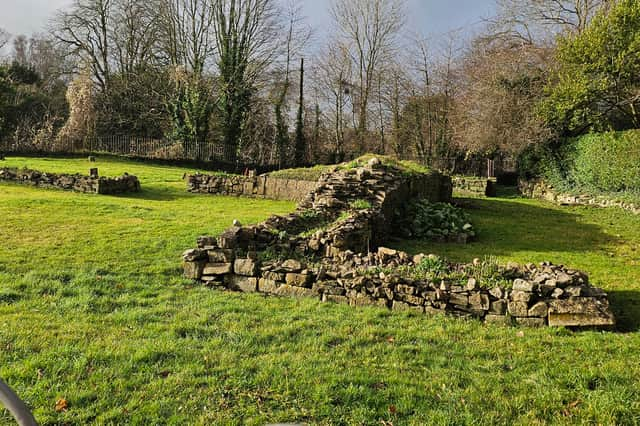Located in Bath Hill and next to Keynsham’s busy High Street, Keynsham Memorial Park is a 20th-century municipal park named to honour the town's fallen soldiers.
The entrance by Bath Hill to the 4.4 hectares park features memorial gates to commemorate the dead of the two World Wars and later conflicts.
The park is nestled next to the River Chew which rises at Chewton Mendip and is used by Bristol Water as a source of public supply.
New bridges and river channels have been built following the worst thunderstorm in living history in July 1968 where several bridges were washed away, resulting in three fatalities in Keynsham after the river level rose some four metres above the area near the bandstand.
Keynsham Memorial Park is also the home of the Keynsham Abbey ruins, an Augustinian abbey founded by William, second Earl of Gloucester, c. 1166.
The abbey held 4000 acres of land in Keynsham and was used as a resting place of rest in 871 AD for Bishop Heahmund of Sherbourne, an Anglo-Saxon warrior who was killed in battle with Vikings, and in 1495, Jasper Tudor, the uncle of Henry VII was also buried here.
The Abbey was dissolved in 1539 following Henry VIII's dissolution of the monasteries and demolition for building stones followed in the late 1700s. In the 1830s, further disturbances took place when the Great Western Railway cut through burial grounds.
Keynsham was given a by-pass in the 1960s which sadly, destroyed more of the Abbey’s already depleted features and structures. Much of what remains is now safely stored and preserved indefinitely.
Other facilities at Keynsham Memorial Park include a cafe, a pond, a skateboard park, tennis courts and play areas.
Here are 27 photos from our visit to Keynsham Memorial Park:
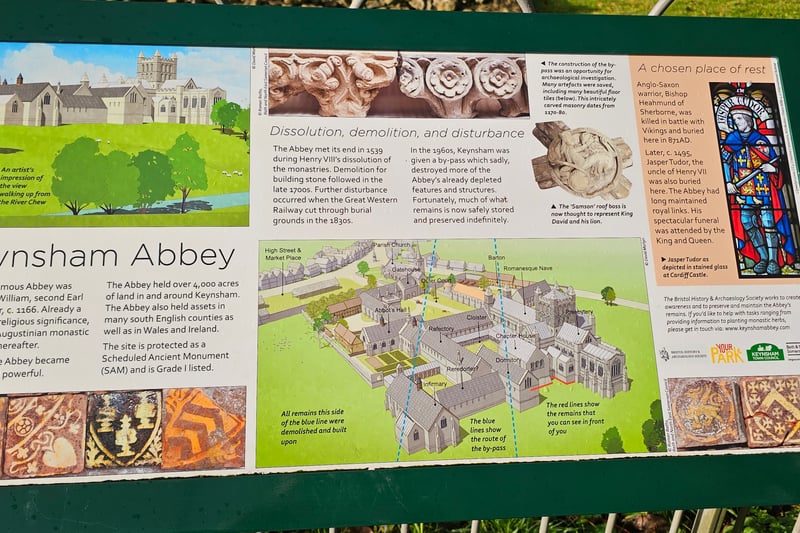
1. Abbey Information Board
The information board by the ruins gives some background to the Augustinian abbey including how it was founded by William, second Earl of Gloucester, c. 1166. The abbey held 4000 acres of land in Keynsham and was used as a resting place of rest in 871 AD for Bishop Heahmund of Sherbourne, an Anglo-Saxon warrior who was killed in battle with Vikings, and in 1495, Jasper Tudor, the uncle of Henry VII was also buried here.
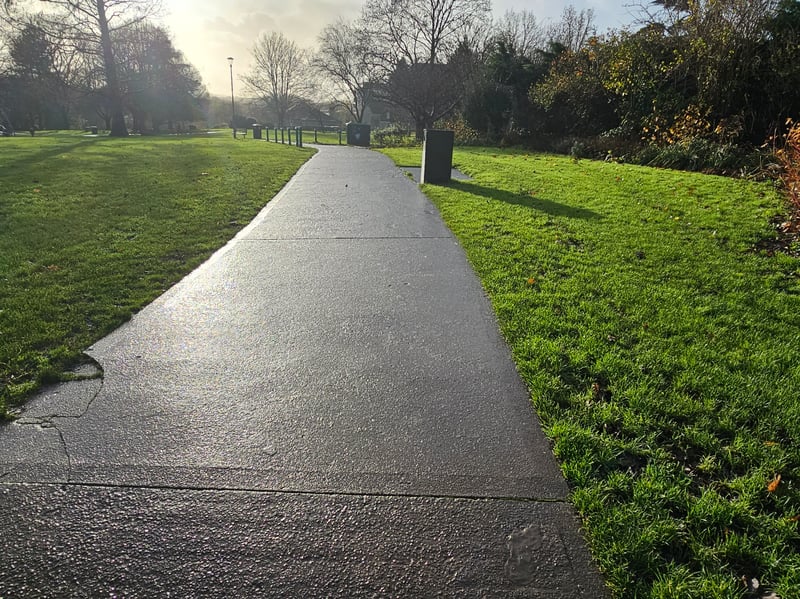
2. Accessible Paths
Flat, well-kept concrete paths run throughout the majority of the park, making Keynsham Memorial Park generally wheelchair friendly.
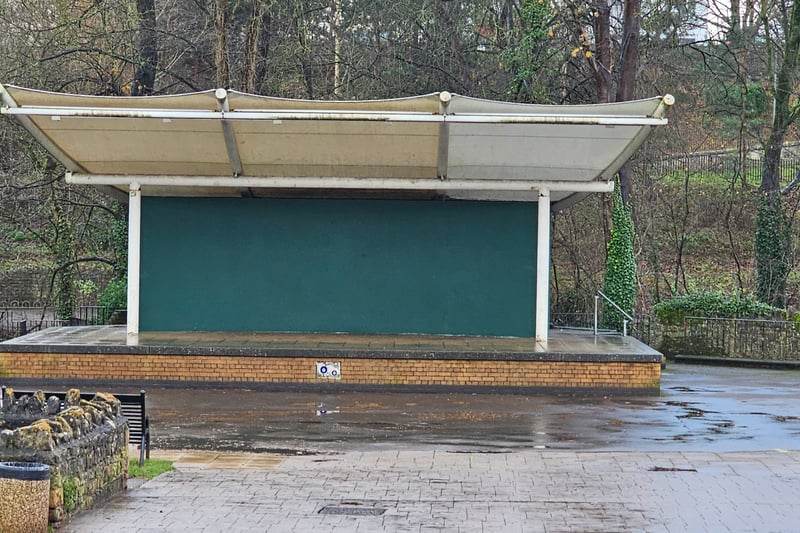
3. Bandstand
The small permanent riverside stage for outdoor music, theatre or cinema can be hired and has hosted Keynsham's popular music festival, now drawing in crowds of over 15,000 for over 20 years.
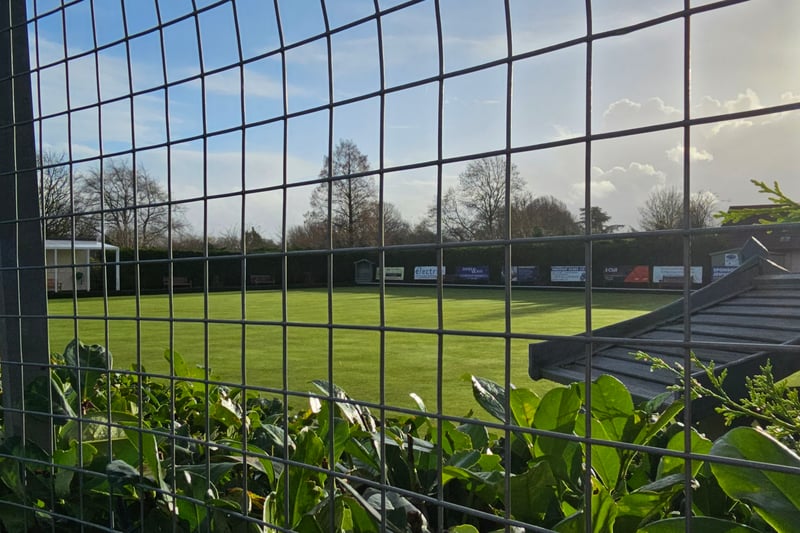
4. Bowling green
The bowling green is run by the Keynsham Bowling Club. Their annual subscription fee is £105 per year, but new members are given a significant discount in their first year of joining the club.
